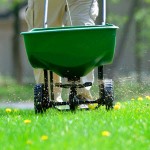
by Blake Thaxton | Dec 23, 2014
It’s December! 2014 is coming to an end, and with it, our success and failures with our gardens and lawns are in our past. Maybe your garden or lawn experienced a great resurgence this year or was set back by the floods of April and the record low temperatures of November. Time to sit back, relax and dream about 2015 and the possibilities of the NEW YEAR!
What will your 2015 gardening or lawn New Year’s Resolution be? Here are a few suggestions:

Image Credit UF IFAS Extension FYN Program
- Fertilize Appropriately, for the sake of your lawn or garden and the environment. Also, it would be good to start out right in the spring and fertilize at the proper time.
- Planting your new trees and shrubs correctly so they can live for many years to come.
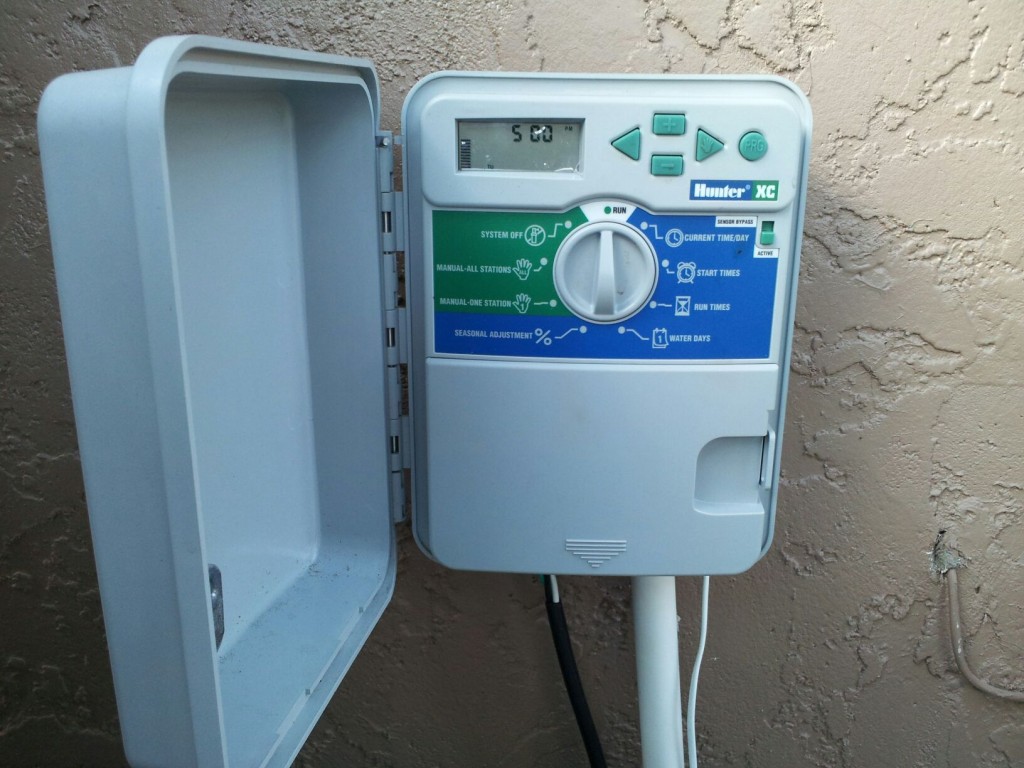
Home Irrigation Timer
- Calibrate your sprinkler system and get it functioning correctly.
- Properly prune (or not prune) your crapemyrtle
The possibilities are endless! Just dream up a resolution and go for it. And if you need help, UF/IFAS Extension will be right here beside you to give you the best research-based advice available.
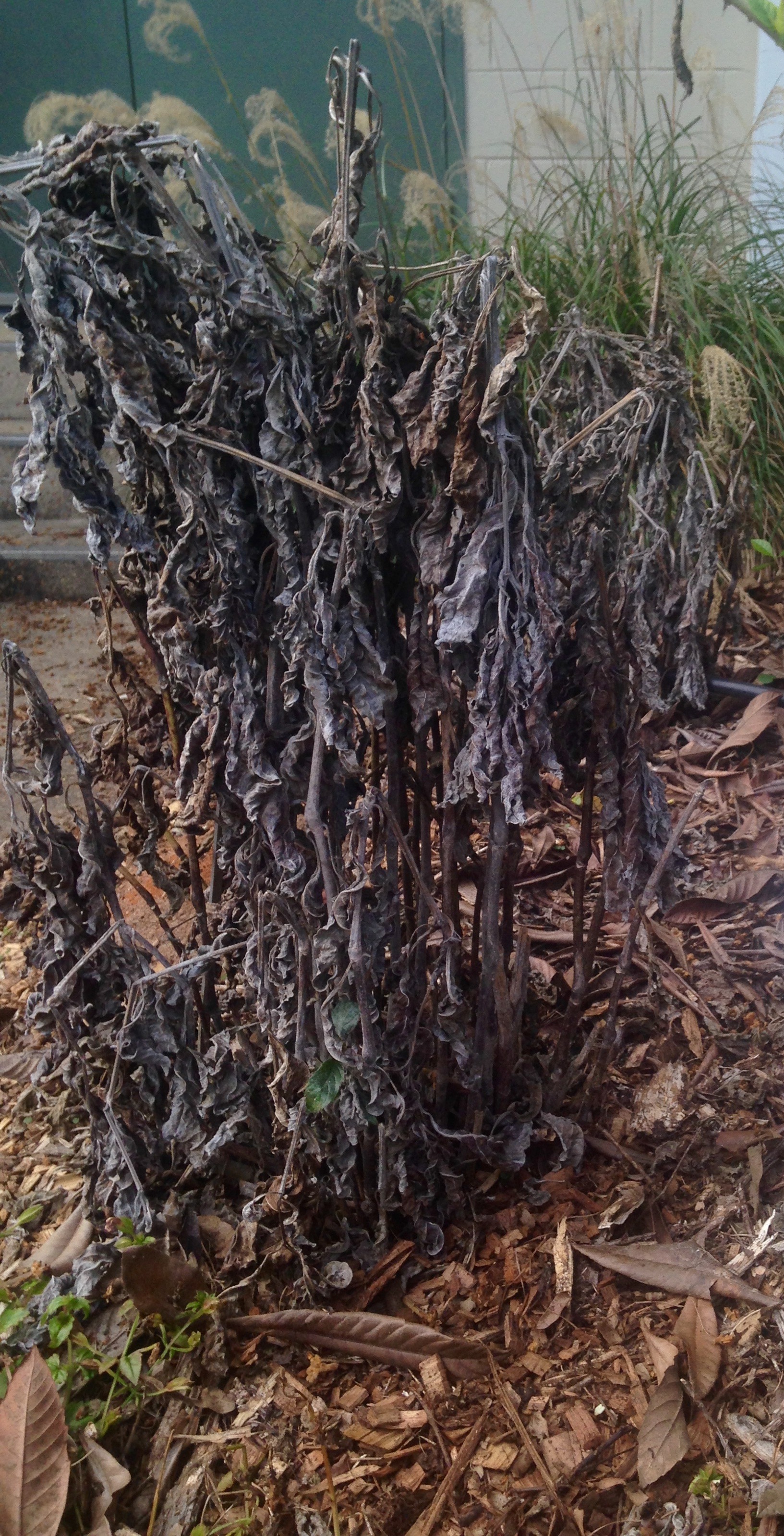
by Sheila Dunning | Dec 23, 2014
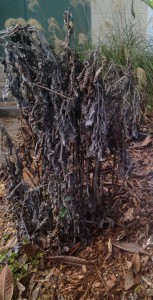
A frozen perennial plant. Photo credit: Taylor Vandiver UF/IFAS Extension.
When you look out at your landscape nobody has to tell you that winter temperatures in Northwest Florida Afterwards, the temperatures warm up and you feel compelled to do something about it. You just need to “turn your back and slam the door”. “Conceal, don’t feel; don’t let them know”. Cold injury can affect the entire plant or just certain plant or parts such as fruits, flowers, buds, leaves, trunks, stems, or roots. Many plant parts can adapt to tolerate cold. Root systems in the landscape are seldom ‘frozen’ in Florida. “The cold never bothered” them “anyway”. While dead, unsightly leaves may be removed as soon as they turn brown after a freeze, the remaining dry looking stems serve as food storage and should be allowed to remain. If they are removed before the weather is warm enough for the plant to resume growth, the root system may not be enough to support the plant and it will die. So, “let it go, let it go, let it go”. “The perfect” landscape “is gone”. “The past is in the past”. “It’s funny how some distance makes everything seem so small”.Tropical plants and summer annuals do not adapt or harden to withstand temperatures below freezing, and many suffer injury at temperatures below 50°F (10°C). Subtropical plants can harden or acclimate (become accustomed to a new climate) to withstand freezing temperatures, and properly conditioned temperate plants can withstand temperatures substantially below freezing.
Recently planted, unestablished plants may be more susceptible to cold injury. One type of winter injury is plant desiccation or drying out. This is characterized by marginal or leaf tip burn in mild cases and totally brown leaves in severe cases. Desiccation occurs when dry winds and solar radiation result in the loss of more water from the leaves than can be absorbed and/or transported by a cold root system. Plant water needs should be checked after a freeze. Plants may have lost substantial moisture during a windy freeze. Plants will transpire (lose water vapor) on a sunny day after a freeze. Cold injured wood can be identified by lightly scraping the bark with your fingernail and examining the color of the cambium layer (food conducting tissue) just underneath. Green tissue indicates the plant is still alive at that point; black or brown coloration indicates dead or injured tissue. 
After a particularly harsh cold event, some plants may be very slow to recover, so some patience is required. “It will rise” with “the break of spring”. Branch tips may be damaged while older wood is free of injury. Delay pruning until new growth appears next spring to ensure that live wood is not removed. In the meantime, take Elsa’s advice and “let it go, let it go, let it go”. You may be “too relieved to grieve”. I hope I haven’t infringed on any copyrights by letting you know “It’s okay to put off the yard work in the name of plant physiology”.
Enjoy the holiday season!
For more information please see:
Treating Cold Damaged Plants
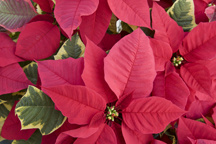
by Gary Knox | Dec 23, 2014
Poinsettias are one of the most popular plants during the Holiday Season. Poinsettias grow as shrubs in their native southern Mexico but have been bred to become compact, bushy plants perfect as container ornamentals. The showy “flowers” of poinsettias are actually modified leaves called bracts. Usually red in color, modern poinsettia breeding created showy bracts ranging in color from red to pink to white to orange, with lots of variegations and different leaf coloration patterns and sizes. The true flowers on poinsettias are the small green and yellow parts located in the center of each group of bracts.

Photo credit: Tyler Jones UF/IFAS.
Here are some do’s and don’ts to ensure that your poinsettias stay beautiful through the holidays and beyond:
- Do choose plants with true flowers that are greenish. Plants with unopened or newly opened flowers will last longer than those already sporting true flowers dusted with yellow pollen.
- Do choose plants that are bushy and leafy. Plants that have lost their lower leaves usually indicate the plant was mishandled and may decline quickly.
- Do place poinsettias in an area with bright light but not direct sunlight.
- Do keep poinsettias away from children and pets. Poinsettias are not poisonous but still might cause skin irritation and upset stomachs. People allergic to latex should be aware poinsettia sap contains latex-like materials.
- Don’t overwater poinsettias. Only water poinsettias when the top of the soil is dry, and let excess water drain away. Remove the poinsettia from the decorative foil wrapping to allow water to drain out.
- Don’t expose poinsettias to temperature extremes or drafty areas. Poinsettias like the same temperatures as people, so keep them away from cold (temperatures below 50) or heat (temperatures above 80).
After the holidays are over, you can plant poinsettias outdoors. For more information see:
Enjoy Your Poinsettias After the Holidays
In the meantime, enjoy your beautiful poinsettias and Happy Holidays!

by Mary Salinas | Dec 16, 2014
This is the time of year when leaves are turning shades of yellow and red and falling from the trees. And this spurs homeowners to get out there with their rakes and rid them from their lawns. This is a good practice as too many leaves will shade out the grass and decrease the quality of the lawn come next spring. So, go ahead and rake them up. However, think about using as many as you can as mulch in other parts of your yard.
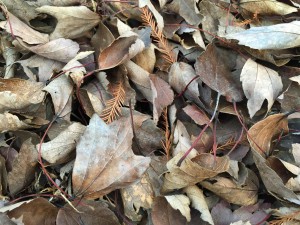
Leaves as mulch. Photo credit: Mary Derrick UF/IFAS Extension.
Leaves can be placed as mulch in landscape beds “as is” or chopped up with your mower or shredder into finer pieces and then spread around perennials, shrubs and trees. When chopped up or shredded, they tend to stay in place much better and don’t blow around when it gets windy. As the leaves break down over time, their nutrients are released and become available; that’s free fertilizer for your landscape plants. Leaves as mulch do have a natural look in the landscape, so if you prefer a more formal or polished look, you can spread a thin one-inch layer of a commercial mulch over the leaves.
Organic mulches (those made from plants) offer many benefits. They add organic matter and improve soil fertility as they decompose, thus reducing the need for added fertilizers. Mulch helps to maintain soil moisture so less frequent irrigation may be needed. Soil-borne disease can also be prevented as the soil does not splash up on the bottom leaves of plants during periods of rain. One of the favored reasons to use mulch is to prevent weeds in your landscape beds. And, of course, mulch is much prettier to look at than bare ground!
So how deep should you apply mulch? University of Florida experts advise a 3 to 4 inch layer of mulch around shrubs and trees. However, keep mulch from setting against the stems and trunks as that can cause moisture and pests to adversely affect them. Place just a thin one-inch layer of mulch over the rootballs of your plants.
Using leaves as mulch recycles a natural resource and saves you money, enriches your soil, fertilizes your plants and keeps them out of the local landfill.
For more information:
Landscape Mulches: What Are The Choices in Florida?
Mulch Recommendations
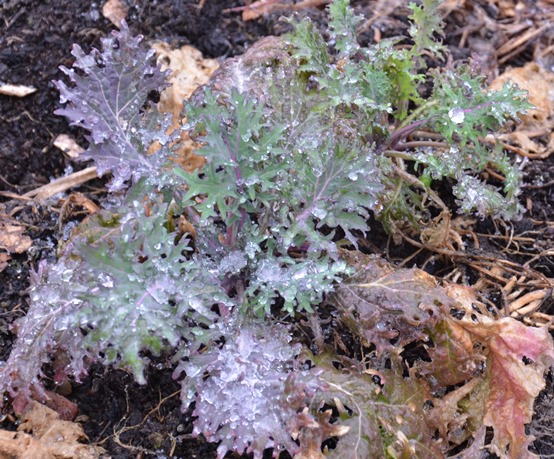
by Les Harrison | Dec 16, 2014

Some plants will handle freeze events, while other will wither and die. Advance preparation will improve chances of saving sensitive plants from subfreezing weather.
Panhandle Florida gardeners face a new set of challenges annually dealing with the effects of cold weather. A little planning and creativity can make plant protection in the landscape successful.
Many homeowners and landscape managers want to know when plants will need protection. Depending on the plant, a frost warning is a good rule of thumb.
Note there is a difference in the terms used for cold weather conditions. Frost, freeze and hard freeze all describe different circumstances.
Frost is when water vapour freezes on surfaces. It happens on clear nights with still air and may even happen when temperatures are above freezing.
Freezing is when cold air moves in and causes temperatures to drop below 32 degrees Fahrenheit. This condition commonly involves low humidity and wind, making drying out a big problem for plants.
A hard freeze is when temperatures dip below 28 degrees Fahrenheit. Many tropical plants and fruit trees will survive a few degrees below freezing for brief periods, but extended periods of freeze or heavy frost may require lights or other heat used safely with a cover.
Many time freeze damage happens during the busy holiday season. People are busy, schedules are disrupted and the distractions, pleasant thought they be, may cause homeowners to miss a freeze alert.
A few simple actions can save these “green” friends for another year’s enjoyment. Some plants can be moved indoors for the winter and incorporated into the interior décor, rather than cramming them last-minute into a clutter when a freeze looms.
Identify old sheets, blankets and drop cloths which can be used as covers for tender plants which must remain outside. Test potential covers beforehand to assure all plants are thoroughly covered.
It is best if the covers enclose the plant entirely without crushing it. Heavy blankets are great insulation, but only a good idea on sturdy plants.
A tomato cage or other support structure can be used to keep weight off the plant. Covers also need to be secured at the ground with pins or weights to assure cold air does not creep in from below.
Finally, keep storage bins handy and remove the covers in the daytime if temperatures are above 55 degrees Fahrenheit.
Monitor weather reports and react accordingly so tender and tropical plants see another spring in a few more months.
To learn more about protecting delicate plants, see “Cold Protection for Landscape Plants”.










